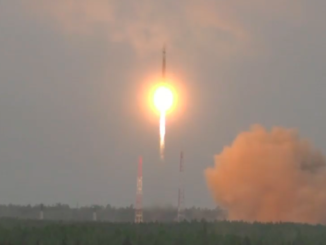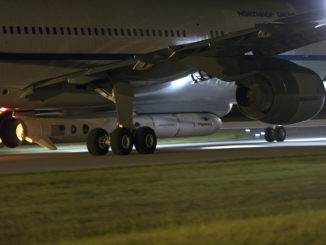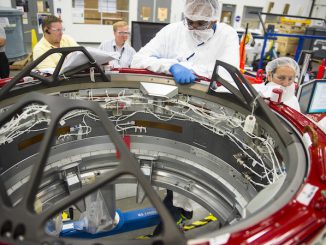Keeping up a tradition dating back to the dawn of the Space Age, a Russian Soyuz rocket emerged from a hangar at the Baikonur Cosmodrome in Kazakhstan before sunrise Saturday for rollout to Launch Pad No. 1 at the Central Asia space base, moving into position for liftoff Monday with a U.S.-Russian-Canadian crew heading for the International Space Station.
The Soyuz-FG rocket’s rail journey to the same starting point used on Yuri Gagarin’s historic first trip into space in 1961 occurred in the early morning, a traditional time for the transfer of Russian rockets from their hangars to their launch pads.
But for the first time since 1984, a Soyuz launcher rolled out with a crew capsule on-board to return the venerable Russian spaceship to service following a rocket failure. In that instance, the Soyuz was returning to flight after an on-pad emergency abort in September 1983, triggered to whisk two Soviet cosmonauts to safety after their Soyuz rocket caught fire during the final countdown.
On Saturday, Russian technicians moved the Soyuz rocket to the pad for the first crew launch since an Oct. 11 booster failure cut short the trip of Russian commander Alexey Ovchinin and NASA flight engineer Nick Hague into orbit in pursuit of the International Space Station. Ovchinin and Hague safely landed a few hundred miles downrange from Baikonur, and Russian investigators said they traced the failure to a deformation in a sensor component in the separation system for the Soyuz rocket’s four first stage boosters.
One of the boosters failed to separate clearly two minutes after liftoff, leading the Soyuz computer to order an automatic abort. Escape rockets pushed the capsule carrying Ovchinin and Hague away from the disintegrating rocket, and the crew briefly encountered 6.7 G’s as they decelerated during their fall back to Earth, before ultimately parachuting onto the steppe of Kazakhstan.
Soyuz rockets have successfully launched four times since the Oct. 11 aborted launch, most recently on Nov. 16, when a Soyuz-FG rocket — the same variant used for crew missions — lofted an automated Progress supply ship on a journey to the space station.
With a four-for-four record over the last six weeks, the Soyuz rocket is set to resume crew launches Monday with a liftoff scheduled at 6:31 a.m. EST (1131 GMT; 5:31 p.m. Baikonur time).
The upcoming crew launch was moved up from Dec. 20 in the wake of the launch failure in October, to ensure they launch before the station’s current three-person crew needs to return to Earth, and to reduce the time the orbiting research outpost has only three residents aboard — not the normal complement of six.
The three-person crew flying on the Soyuz MS-11 spacecraft is led by Oleg Kononenko, a veteran Russian cosmonaut born in Turkmenistan who worked as an engineer and designer in Russia’s space program before his selection as a cosmonaut candidate in 1996. Kononenko, 54, has flown on three space station expeditions in 2008, 2011/2012 and 2015, logging 533 days in space.
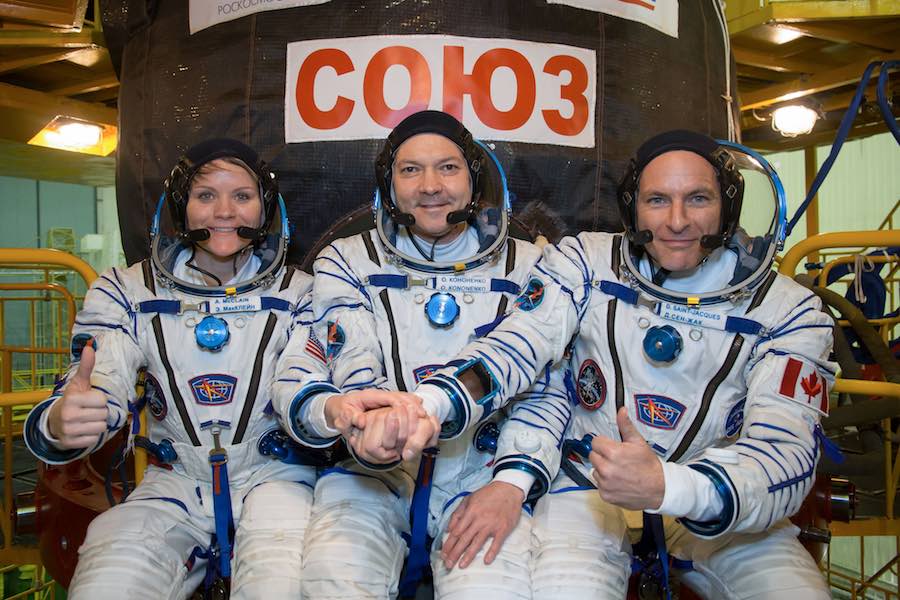
Kononenko will occupy the center seat of the Soyuz MS-11 spacecraft during launch and docking with the station, flanked on the left by Canadian Space Agency astronaut David Saint-Jacques, who will serve as co-pilot. NASA astronaut Anne McClain will serve as a second flight engineer in the Soyuz capsule’s right seat. Both are launching on their first space missions.
Saint-Jacques, 48, is from Saint-Lambert, Quebec, holds a bachelor’s degree in engineering physics from from École polytechnique de Montréal in Canada. He earned a Ph.D. in astrophysics from Cambridge University in the UK, and a medical degree from Université Laval in Canada, and helped design adaptive optics and interferometry systems for telescopes, and radiological equipment for a hospital in France. Saint-Jacques was working as a medical doctor in an an Inuit community on Hudson Bay when he was selected as an astronaut candidate by the Canadian Space Agency in 2009.
McClain is a 39-year-old U.S. Army colonel and a former combat helicopter pilot who served in Operation Iraqi Freedom. A native of Spokane, Washington, McClain earned a bachelor’s degree in mechanical/aeronautical engineering from the U.S. Military Academy at West Point, and earned a master’s degree in aerospace engineering from the University of Bath, and a master’s degree in international relations from the University of Bristol, both in England. NASA selected McClain as an astronaut candidate in 2013.
Kononenko, Saint-Jacques and McClain will take an expedited, six-hour flight to the space station, culminating in an automated docking with the Poisk module at 12:36 p.m. EST (1736 GMT) Monday, when they will join three other station crew members due to return to Earth on Dec. 20.
The photos below show the Soyuz rocket’s rollout at the Baikonur Cosmodome on Saturday.
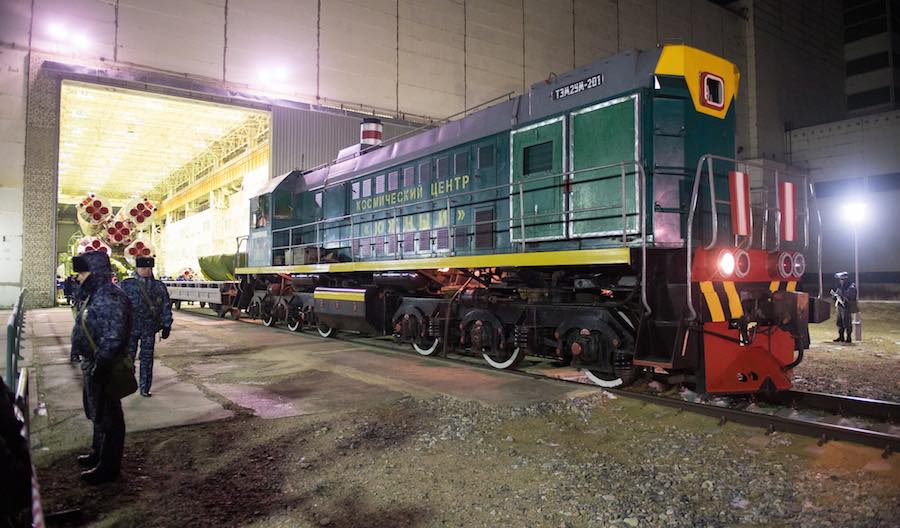
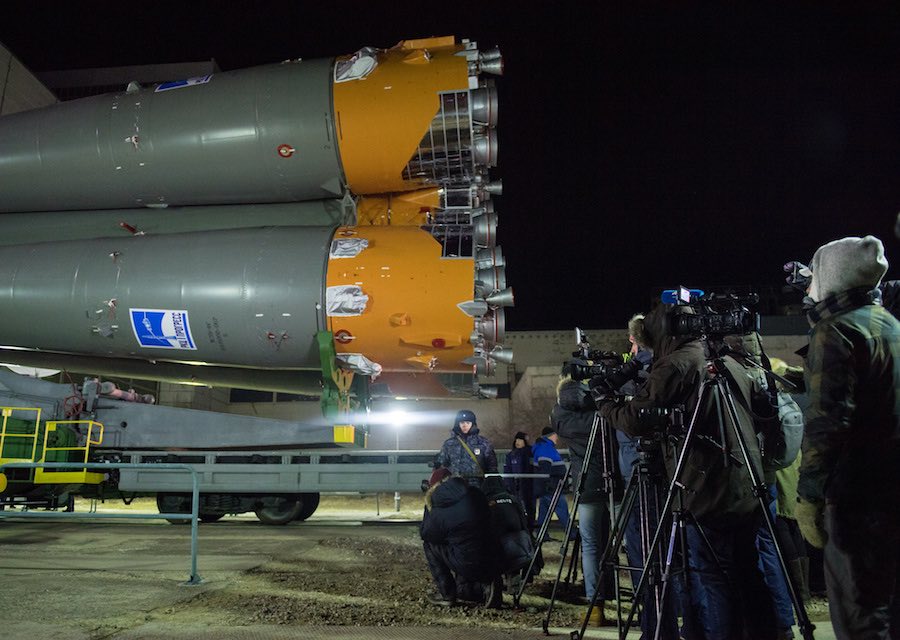
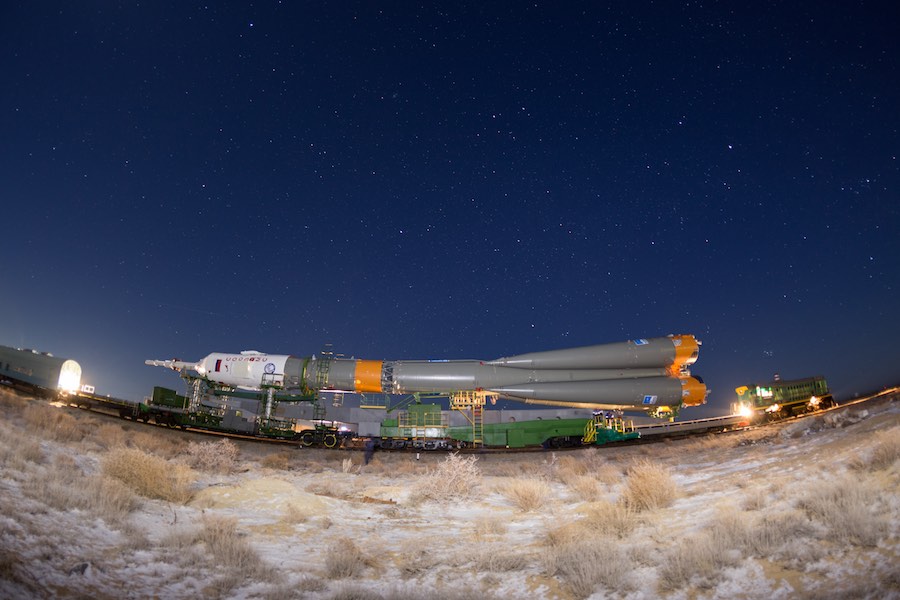
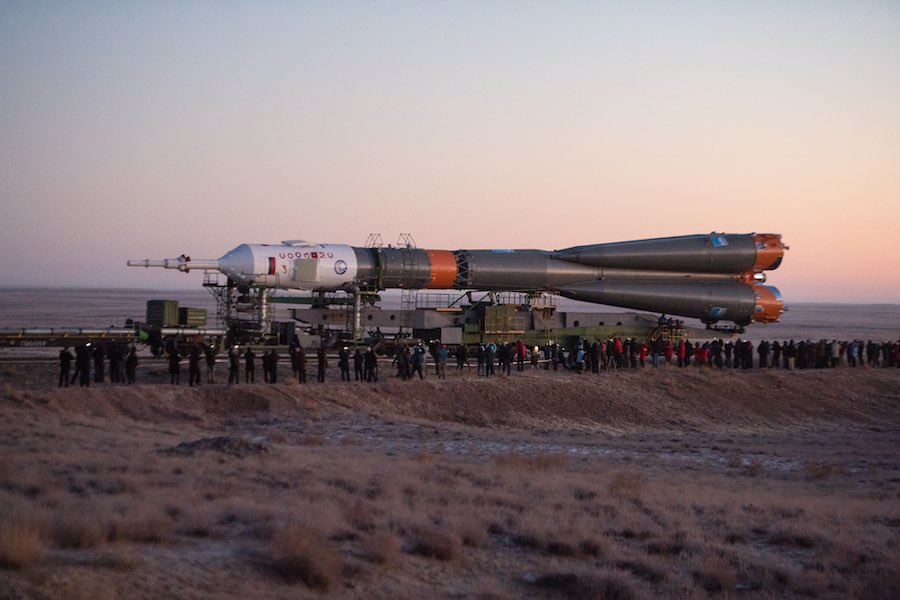
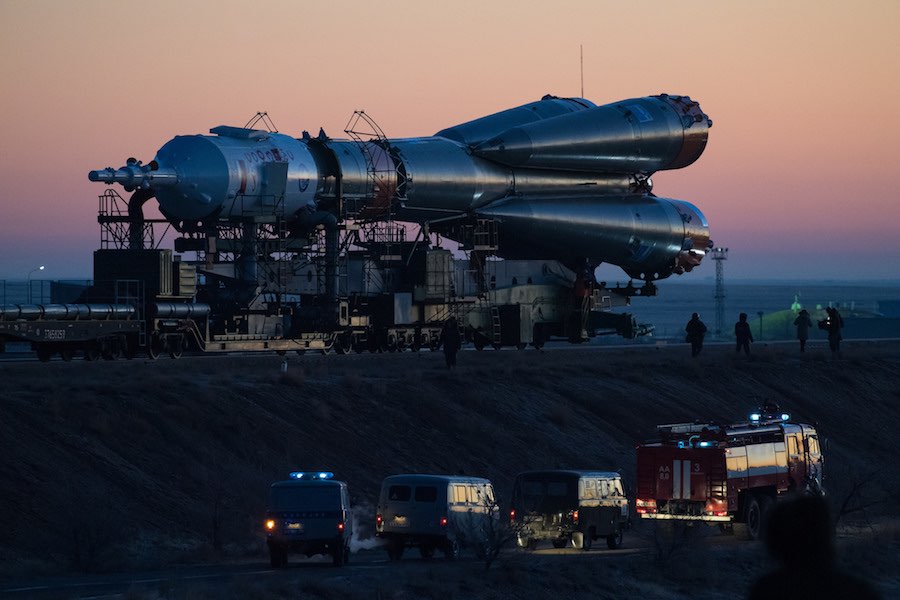
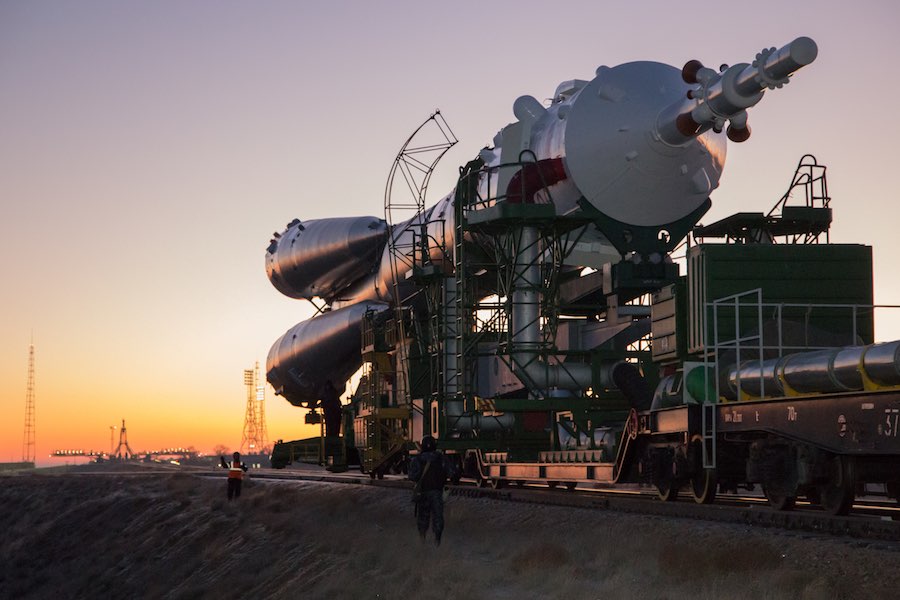
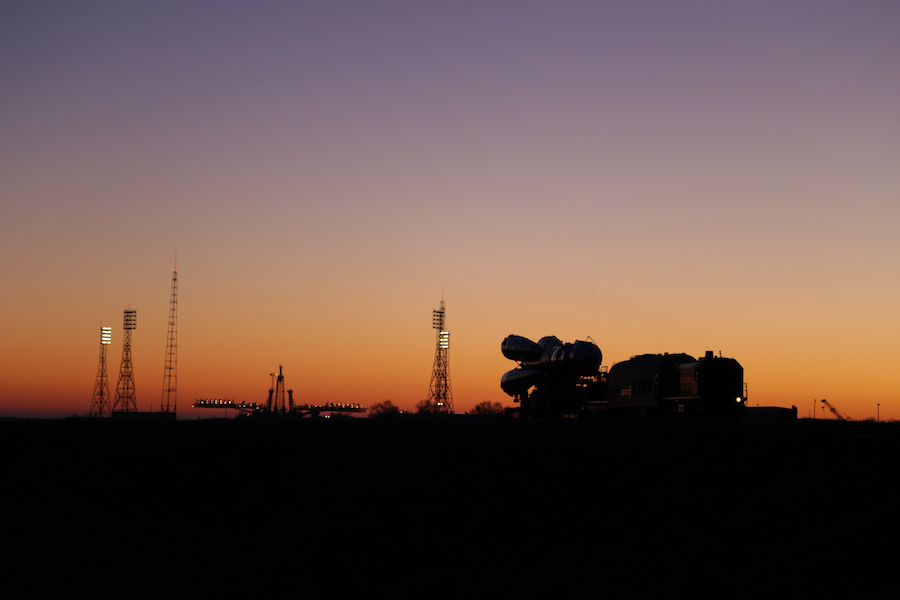
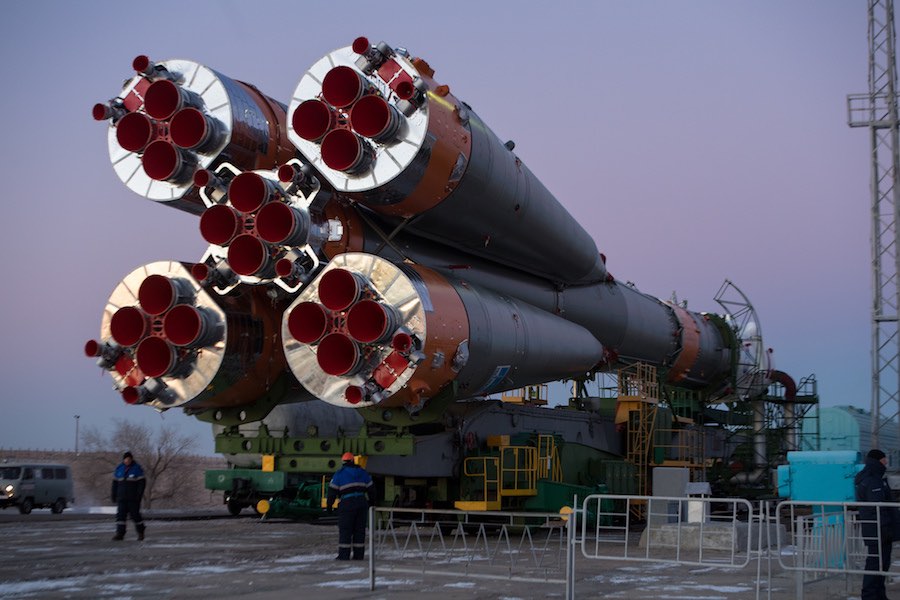
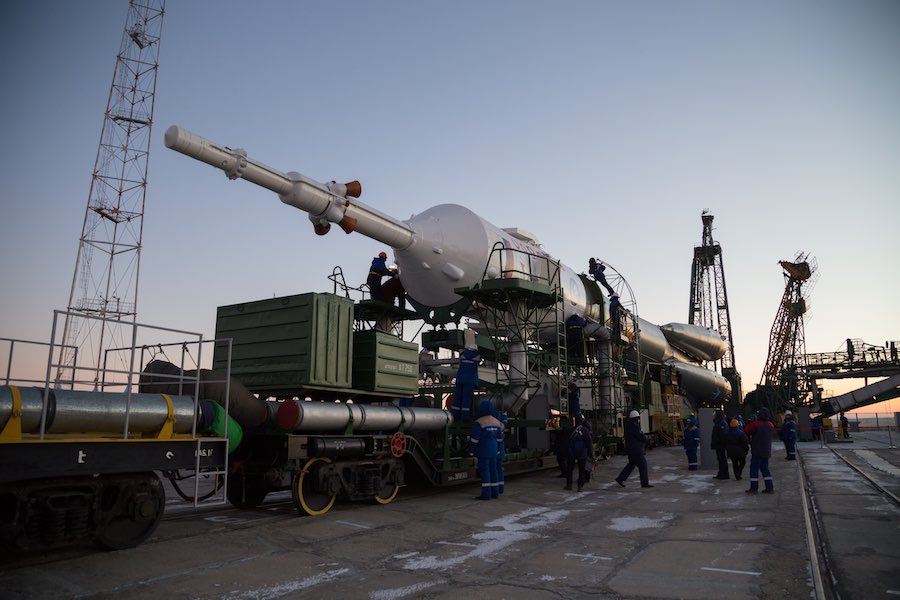
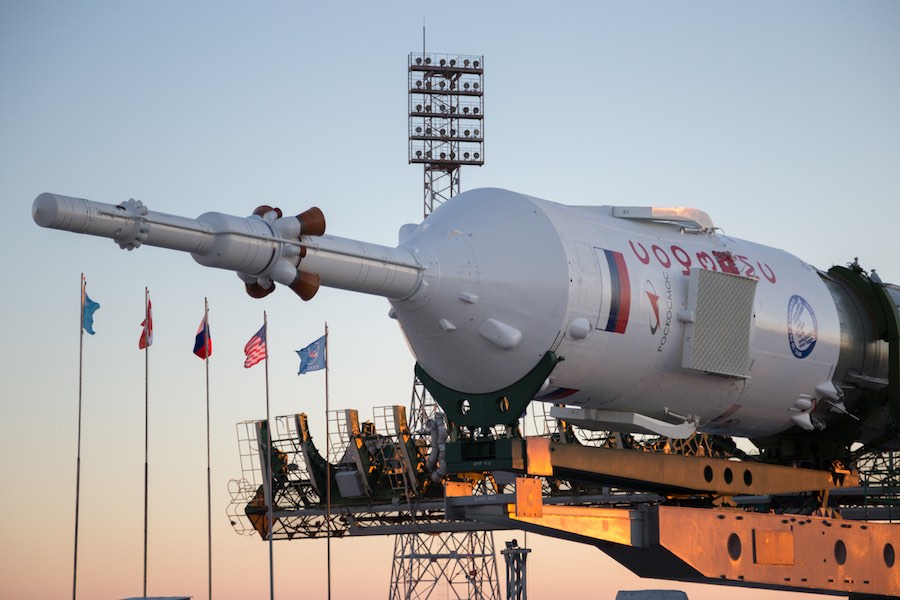
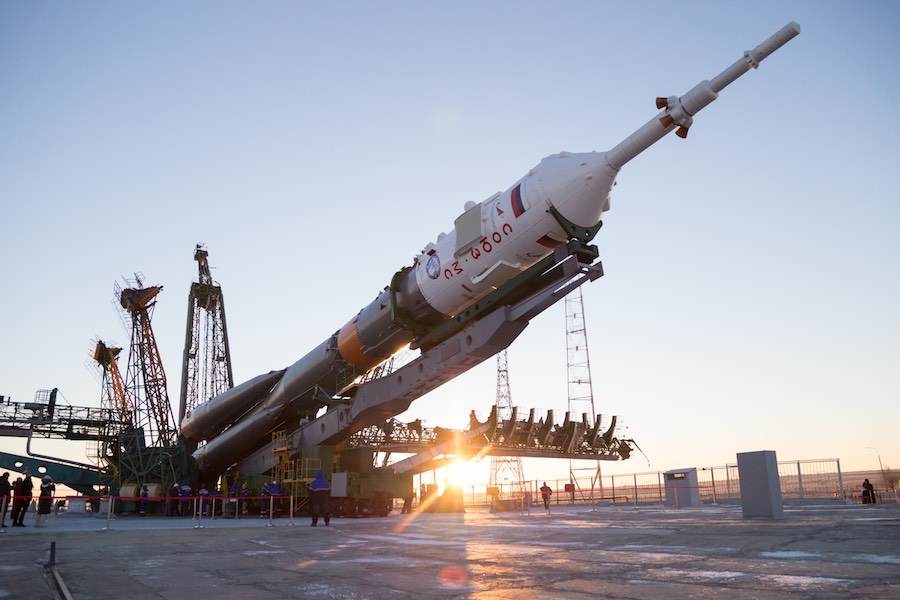
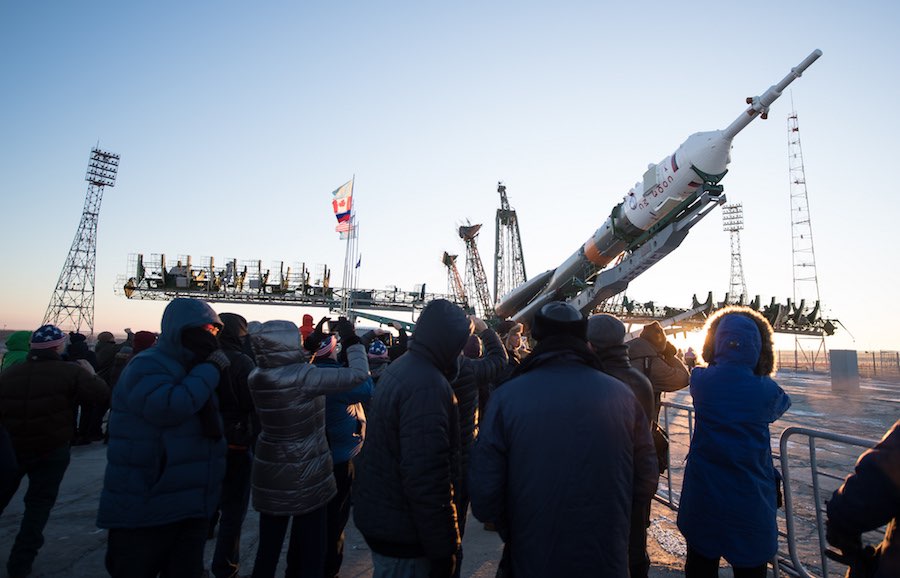
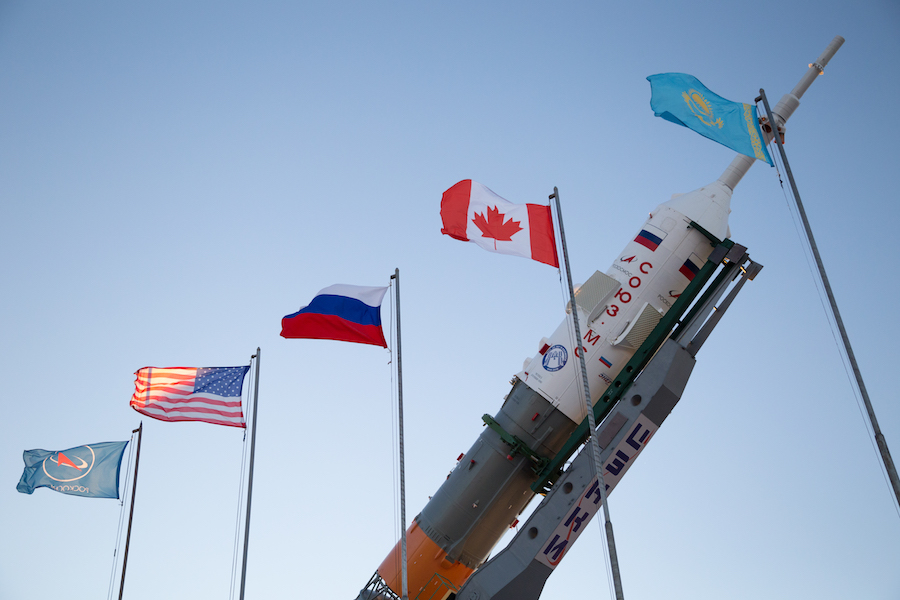
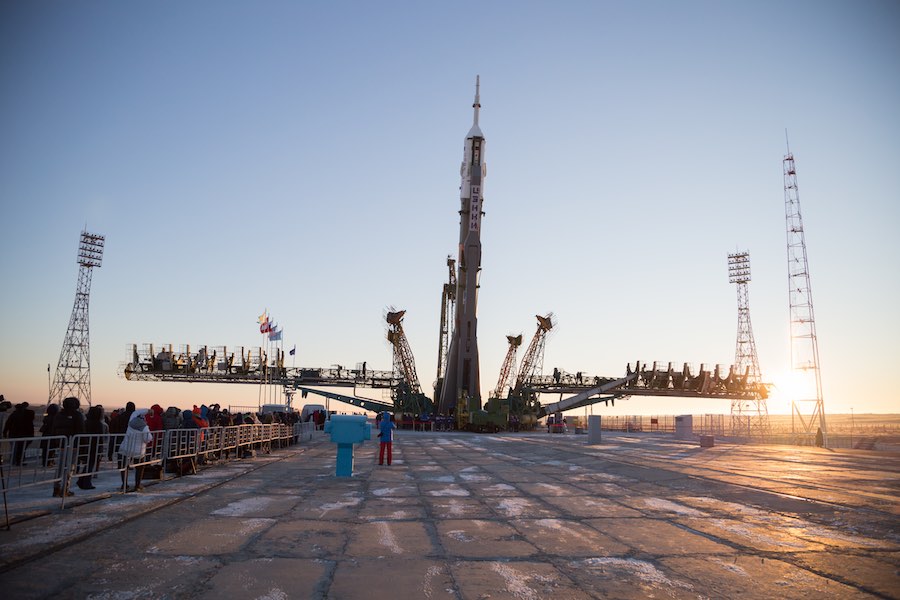
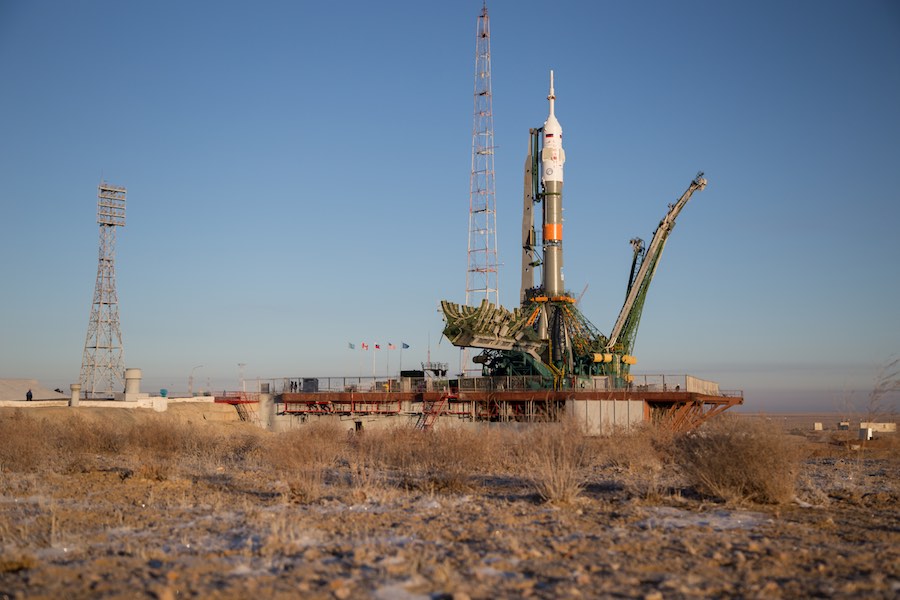
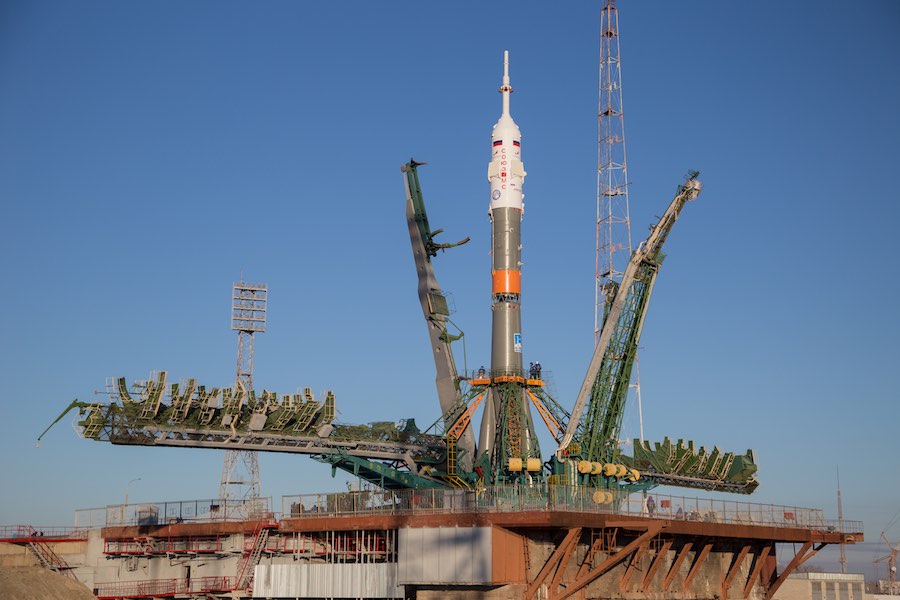
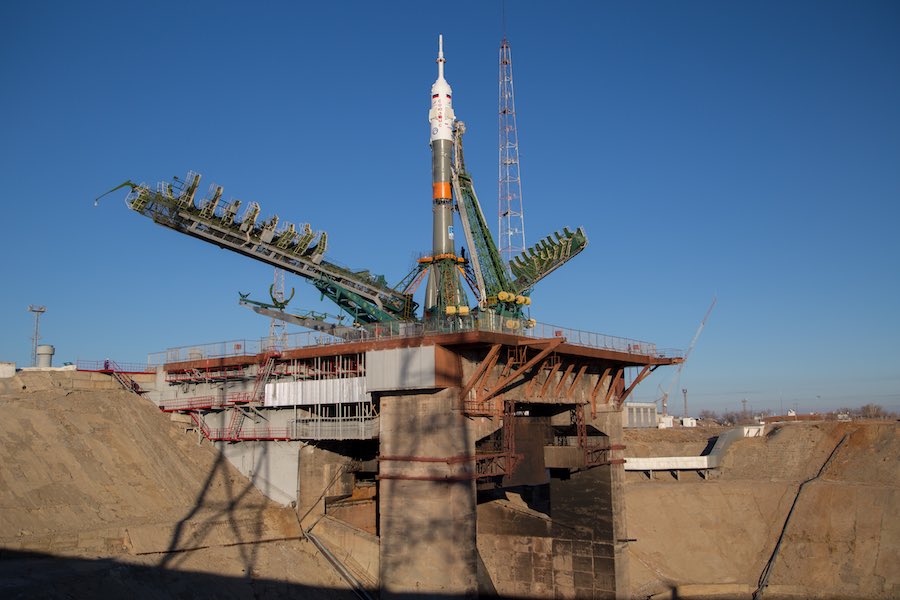
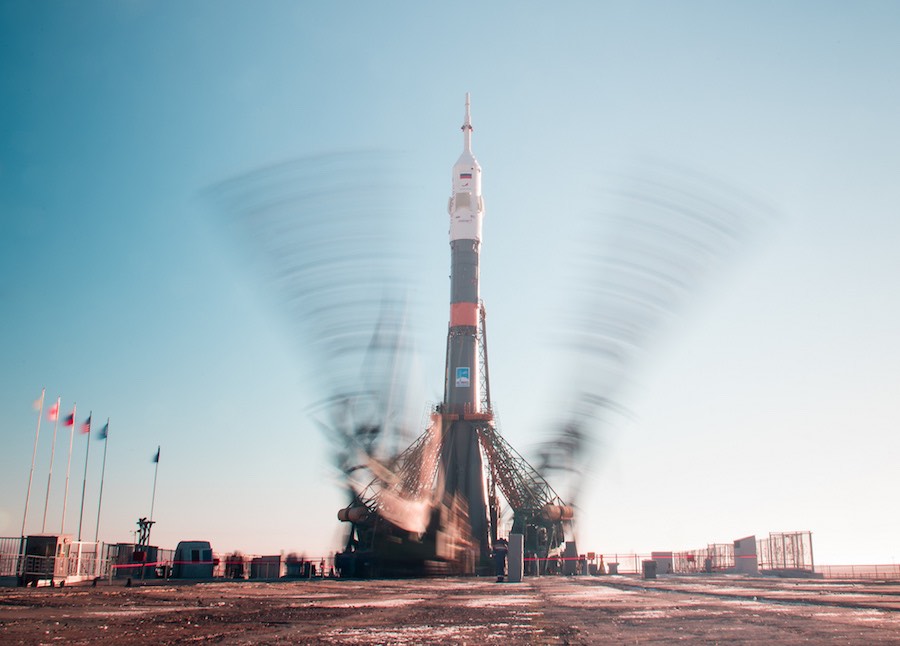
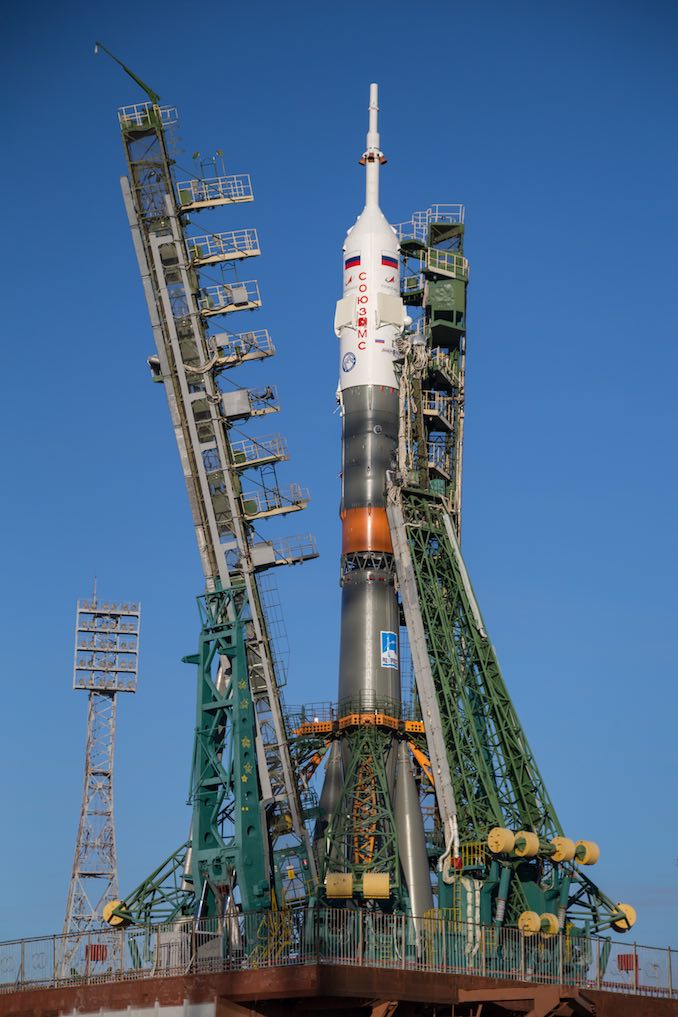
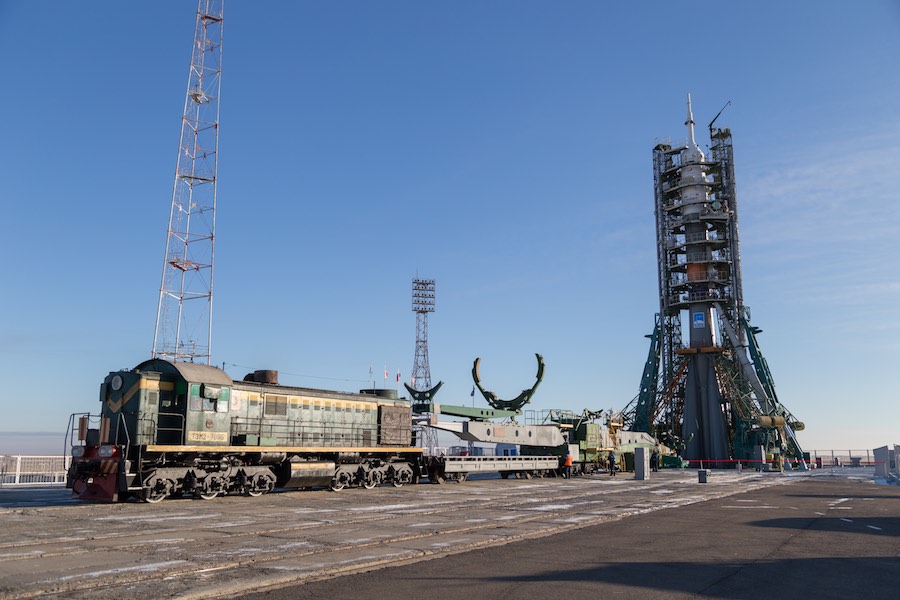
Email the author.
Follow Stephen Clark on Twitter: @StephenClark1.

